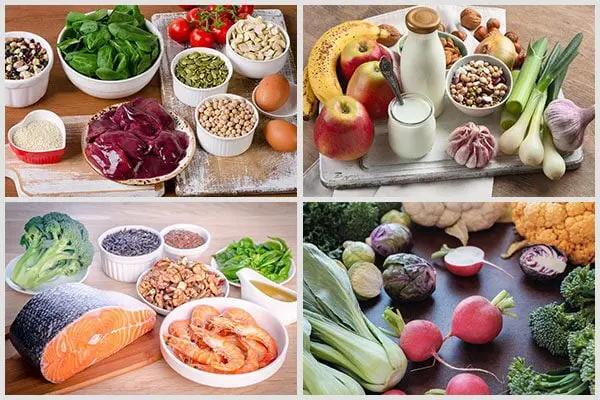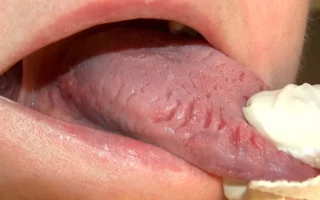Understanding Sub chorionic Hemorrhage
Sub chorionic hemorrhage, a condition where bleeding occurs between the uterine wall and the chorion (the external fetal membrane), can be a source of concern for expectant mothers. While medical intervention is pivotal, espousing a balanced diet can play a probative part in the mending process. In this article, we explore the influence of specific nutrients on sub chorionic hemorrhage recovery, emphasizing foods rich in vital vitamins and minerals. Choosing the right foods to heal sub chorionic hemorrhage is pivotal for expectant mothers undergoing pregnancy complications.
The Role of Diet in Healing Sub chorionic Hemorrhage
A well- rounded diet can contribute significantly to overall health, and this holds true during gestation, especially when dealing with complications like sub chorionic hemorrhage. Certain nutrients play a vital part in promoting mending and supporting the body’s natural processes. Let’s claw into crucial orders of foods that can help in the recovery from sub chorionic hemorrhage.
1. Vitamin K-rich foods: Vitamin K is famed for its part in blood clotting, an essential process in precluding inordinate bleeding. Incorporating vitamin K-rich foods into the diet can be salutary for women dealing with sub chorionic hemorrhage. Lush greens similar to kale, spinach, and Swiss chard are excellent sources of vitamin K. Also, broccoli and Brussels sprouts contribute to the recommended diurnal input. These foods not only give vitamin K but also offer a diapason of other nutrients vital for overall well- being.
2. Vitamin C- Enriched Foods: Vitamin C, an antioxidant, plays a pivotal part in collagen conflation, promoting towel form and mending. Citrus fruits like oranges, failures, and grapefruits are well- known for their vitamin C content. Berries, similar to strawberries, blueberries, and snorts, are also rich in this essential vitamin. Including these fruits in the diet can help in strengthening blood vessels and supporting the mending process associated with sub chorionic hemorrhage.
3. Lush greens: In addition to being excellent sources of vitamin K, lush greens offer an array of nutrients, including iron and folate, both pivotal during gestation. Iron helps anemia, a condition characterized by a lack of red blood cells, while folate is essential for fetal development. Incorporating spinach, kale, and collard flora into reflection not only supports blood clotting but also contributes to overall motherly and fetal well- being.
4. Omega- 3 Fatty Acid- Rich Foods: Omega- 3 fatty acids, particularly EPA and DHA, are essential for fetal brain and eye development. Adipose fish like salmon, mackerel, and sardines are excellent sources of these pivotal adipose acids. For those who prefer factory- grounded options, flaxseeds, chia seeds, and walnuts can be included in the diet. Omega- 3 adipose acids also retain anti-inflammatory parcels, which may help in reducing inflammation associated with sub chorionic hemorrhage.
5. Cruciferous Vegetables: Cruciferous vegetables, including broccoli, cauliflower, and Brussels sprouts, offer a unique combination of vitamins, minerals, and phytonutrients. Sulforaphane, an emulsion set up in cruciferous vegetables, hasanti-inflammatory and antioxidant parcels. These vegetables contribute to a well- rounded diet, supporting the body’s mending processes and overall health.
6. Iron-rich foods: Iron is a vital mineral during gestation, supporting the increased blood volume and precluding iron- insufficiency anemia. Foods rich in iron, similar to spare flesh and flesh, can be salutary. Non-heme iron, set up in factory- grounded sources like lentils, sap, and fortified cereals, is also important for pregnant women. Acceptable iron input is essential for optimal oxygen transport, serving both the mama and the developing fetus. Foods to heal sub chorionic hemorrhage play a vital part in supporting motherly recovery during gestation.
7. Probiotic-rich foods: Maintaining a healthy balance of gut bacteria is associated with colorful health benefits, including vulnerable system support and inflammation reduction. Probiotic-rich foods, similar to yogurt, kefir, and fermented vegetables like sauerkraut, contribute to a healthy gut microbiome. Incorporating these foods into the diet may laterally support the body’s mending processes and overall well- being.
8. Whole Grains: Whole grains are a precious addition to the diet for individualities dealing with sub chorionic hemorrhage. Rich in fiber, vitamins, and minerals, whole grains contribute to overall health and well- being. Options like brown rice, quinoa, and whole wheat give a sustained release of energy, helping to maintain stable blood sugar situations. The fiber content aids in digestion and supports the body’s natural detoxification processes. Including whole grains in reflection ensures a different nutrient profile, promoting optimal health during the recovery from sub chorionic hemorrhage.
9. Hydration: Staying adequately doused is pivotal for pregnant women, and it becomes indeed more significant when managing conditions like sub chorionic hemorrhage. Water plays a vital part in colorful physiological processes, including blood rotation and amniotic fluid conservation. Proper hydration supports the body’s capability to transport nutrients efficiently and aids in flushing out poisons. Pregnant women should aim to drink an acceptable quantity of water daily, and hydration can also come from hydrating foods like water-rich fruits and vegetables.
Foods to Avoid in Sub chorionic Hemorrhage
While fastening on nutrient- thick foods is essential, it’s inversely important to be aware of certain particulars that may complicate the condition or hamper the mending process. Caffeine inordinate caffeine input can contribute to dehumidification and may affect blood inflow. It’s judicious to moderate caffeine consumption during gestation and conclude for decaffeinated options when possible. Processed Foods largely reused foods frequently contain complements and preservatives that may have negative goods on overall health.
Also, they may warrant the essential nutrients demanded for mending. Choosing whole, undressed foods is a healthier volition. High- Sugar Foods Diets grandly in refined sugars can lead to inflammation and may negatively impact blood sugar situations. Concluding for natural sweeteners set up in fruits can be a healthier choice. Excessive Salt High sodium input can contribute to water retention and increased blood pressure. Maintaining a balanced swab input is pivotal, and choosing foods with natural seasonings over heavily interspersed options is judicious. Raw or Undercooked Seafood and Flesh to reduce the threat of foodborne ails, it’s recommended to avoid raw or undercooked seafood and meats during gestation.
Final Thoughts
Choosing foods to heal sub chorionic hemorrhage is a crucial aspect of supporting recovery during gestation. Navigating sub chorionic hemorrhage during gestation requires a multifaceted approach, combining medical guidance with a focus on nutrition. While specific foods can contribute to the mending process, individual responses may vary. It’s essential for expectant mater to maintain open communication with healthcare professionals, bandy salutary choices, and insure a comprehensive care plan.
Also Read: Can Drinking Hot Water Shrink Fibroids Naturally?



